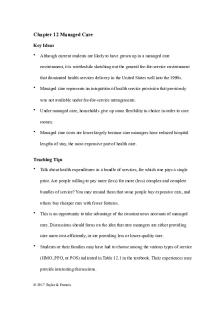Energy Chapter Quiz Answers PDF

| Title | Energy Chapter Quiz Answers |
|---|---|
| Author | Sofia Salinas |
| Course | Biological Concepts |
| Institution | Virginia Commonwealth University |
| Pages | 2 |
| File Size | 36 KB |
| File Type | |
| Total Downloads | 55 |
| Total Views | 144 |
Summary
This document has the answers to the Energy Quiz put on Blackboard for Colleen Higgens...
Description
A cyclist rides her bike up a very steep hill. Which choice below properly describes this example in energetic terms? both a and bPotential energy in food is converted to kinetic energy as the cyclist's muscles push her up the hill. Potential energy is the greatest when the cyclist is at the top of the hill.
Animal fats and plant oils are sometimes used as sources of fuel for automobile engines. How is energy harvested from these molecules? They contain long chains of hydrogen and carbon that, when broken, release the energy stored in the bonds linking the atoms together.
During C4 photosynthesis: ???: B.
plants are able to continue producing sugars even when they must almost completely close their stomata to reduce water loss during hot days.
A molecule of chlorophyll increases in potential energy: when a photon strikes it, boosting electrons to a higher energy excited state. B.
when one of its electrons is boosted to a higher-energy excited state upon being struck by a photon of light.
Photosynthesizing plants rely on water: to replace electrons that are excited by light energy and passed from molecule to molecule down an electron transport chain.
D.
to replace electrons that are excited by light energy and passed from molecule to molecule down an electron transport chain
A green plant will grow if given nothing more than: water, light and carbon dioxide
The leaves of plants can be thought of as "eating" sunlight. From an energetic perspective this makes sense because:
light energy, like chemical energy released when bonds of food molecules are broken, is a type of kinetic energy. light energy, like the chemical energy stored in food molecules, is used inside plants to do work.
During photosynthesis, which step is most responsible for a plant's acquisition of new organic material: the "plucking" of carbon atoms from the air and fixing of them to organic molecules within the chloroplast.
In your body, when energy is released from the breakdown of a molecule such as glucose: some energy may be harnessed by building the unstable high-energy bonds that attach phosphate groups to ADP molecules.
Every time a source of energy is converted from one form to another: some of the energy is converted to heat, which is not a very usable form of kinetic energy. (second law of thermodynamics) The actual production of sugars during photosynthesis takes place: within the stroma, outside the thylakoid, but still inside the chloroplast. Cellular respiration is the process by which: energy from the chemical bonds of food molecules is captured by an organism. Thylakoids are stacks of membranes inside the chloroplast. This is necessary to: None of the above...
Similar Free PDFs

Energy Chapter Quiz Answers
- 2 Pages

Chapter 6 Quiz Answers
- 9 Pages

Chapter 10 Quiz Answers
- 2 Pages

Chapter 7 Quiz Answers
- 9 Pages

Chapter 9 quiz answers
- 1 Pages

chapter 3 quiz answers
- 4 Pages

Chapter 8 Quiz Answers
- 1 Pages

Chapter 2 Quiz Answers
- 11 Pages

Chapter 4 Quiz Answers
- 1 Pages

Chapter 5 Quiz Answers
- 1 Pages

Quiz chapter 10 Answers
- 2 Pages

Chapter 12 Quiz Answers
- 12 Pages

Chapter 7 Quiz Answers
- 1 Pages

Chapter 1 Quiz answers
- 7 Pages

Chapter 1 Quiz & Answers
- 4 Pages

Chapter 4 Quiz Answers
- 10 Pages
Popular Institutions
- Tinajero National High School - Annex
- Politeknik Caltex Riau
- Yokohama City University
- SGT University
- University of Al-Qadisiyah
- Divine Word College of Vigan
- Techniek College Rotterdam
- Universidade de Santiago
- Universiti Teknologi MARA Cawangan Johor Kampus Pasir Gudang
- Poltekkes Kemenkes Yogyakarta
- Baguio City National High School
- Colegio san marcos
- preparatoria uno
- Centro de Bachillerato Tecnológico Industrial y de Servicios No. 107
- Dalian Maritime University
- Quang Trung Secondary School
- Colegio Tecnológico en Informática
- Corporación Regional de Educación Superior
- Grupo CEDVA
- Dar Al Uloom University
- Centro de Estudios Preuniversitarios de la Universidad Nacional de Ingeniería
- 上智大学
- Aakash International School, Nuna Majara
- San Felipe Neri Catholic School
- Kang Chiao International School - New Taipei City
- Misamis Occidental National High School
- Institución Educativa Escuela Normal Juan Ladrilleros
- Kolehiyo ng Pantukan
- Batanes State College
- Instituto Continental
- Sekolah Menengah Kejuruan Kesehatan Kaltara (Tarakan)
- Colegio de La Inmaculada Concepcion - Cebu